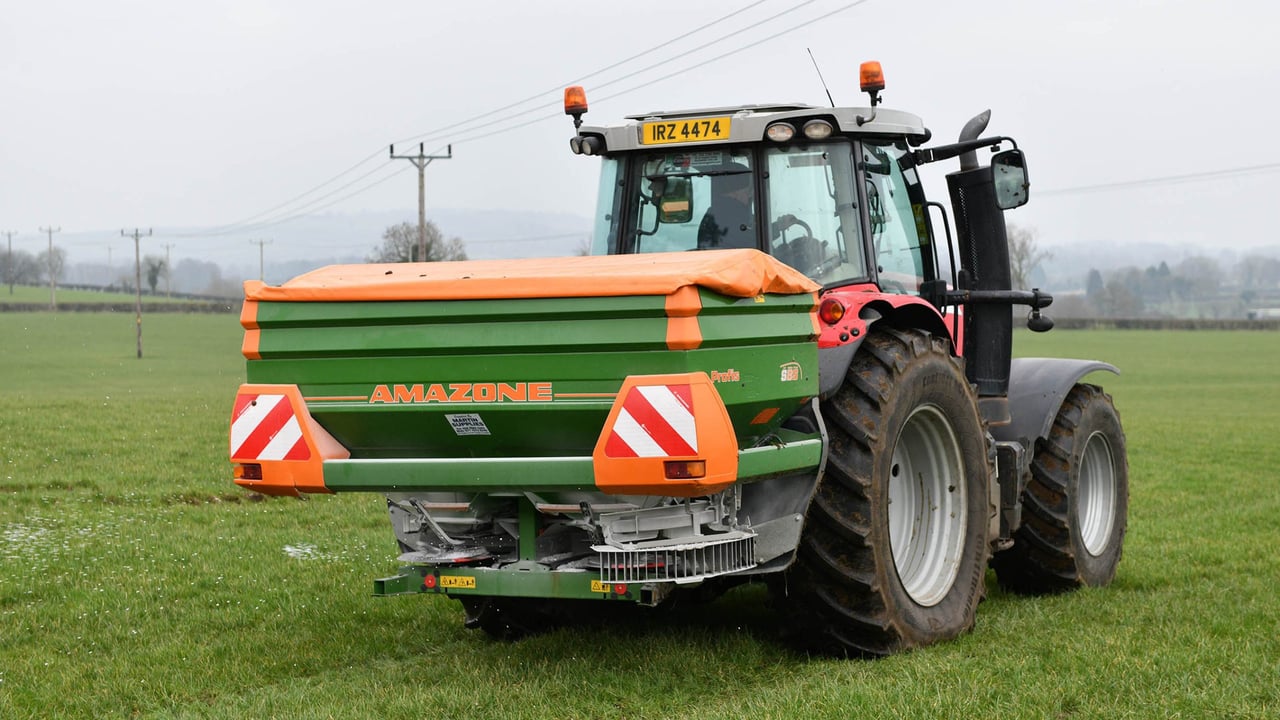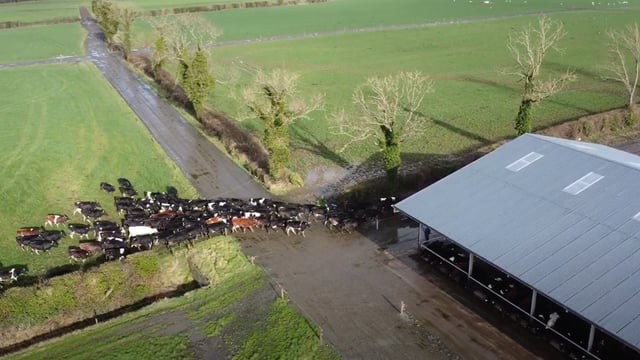Nitrogen application: Opportunity as conditions improve
Nitrogen (N) application might be on the cards as soil temperatures have slightly improved in the last week as they sit between 7-8℃ across the country with ground conditions also improving.
Many farmers across the country did not get the opportunity to get any chemical nitrogen out as the weather has been cold and land has been inaccessible in many parts.
However, with soil temperatures rising ever so slightly and land becoming a lot more trafficable, it may be an opportunity to catch up on spreading a bit of chemical fertiliser.
Some rainfall is forecast for the weekend, which may stop farmers from going out with the spinner, but the days to follow look to be dry.
Farmers can often feel the pinch of grass demand in the second rotation when cows are reaching their peak milk supply and their peak dry matter intake (DMI) and grass are struggling to keep up.
This is why it is vitally important that farmers get out 60 units of N/ac across the farm either in the form of dilute slurry or chemical N.
If farmers have paddocks grazed at this stage, they should get out dilute slurry to these grazed areas (up to 30% of the farm) applying 2,000gals/ac which equates to around 25kg/ha of available nitrogen.
If farmers already have 20-23 units of chemical N out on their land, then they should get out another 20-23 units/ac across another two-thirds of the farm in the next couple of days.
For ground that has received no chemical N or slurry to date, farmers should aim to apply 30-35 units/ac to these areas in the next couple of days.
Whether there was much N applied to the land or not, the aim should be to get out at least 60 units/ac by the end of March to ensure there is good average farm cover for the second round.
The following table is a guide for your spring N application:
| Fert/slurry split | Product | 40% of farm area | 15% of farm area | 15% of farm area | 30% of farm area |
|---|---|---|---|---|---|
| Jan/Feb | Cattle slurry | 2,000gals/ac | |||
| February | Protected urea | 20 units of N/ac (mid Feb) | 23 units of N/ac (early Feb) | 20 units of N/ac (early Feb) | 23 units of N/ac |
| February | Cattle slurry | 2,500gals/ac (mid-Feb after grazing) | 2,500gals/ac (End Feb after grazing) | ||
| March | Protected urea | 20 units of N/ac | 20 units of N/ac | 23 units of N/ac | 40 units of N/ac |
| Total N by April 1 | Slurry & fert N | 56 units of N/ac | 60 units of N/ac | 66 units of N/ac | 63 units of N/ac |
We are now into the start of March, so if you are behind on this table, you should just calculate back now to try and make up for N not spread within reason.
For example, if there is land that has received no chemical N or slurry, either spread 2,500- 3,000gals of slurry/ac on it now or 30-25 units of N/acre and go again at the same rate towards the end of March.
For cattle slurry 2,000gals/ac equates to 16 units of N/ac or 20kg of N/ha. 2,500gals/ac equates to 20 units of N/ac or 25kg of N/ha.
To convert units of N/ac to kg of N/ha, simply multiply the units/ac by 1.23. e.g., 40 units of N/ac X 1.23 = 49.2kg of N/ha. Spreading 23 units of N/acre is simply a half bag (50kg bag) of a 46% N product (e.g. urea)/acre.
Grass growth is slightly behind this year compared to the previous five year average with grass growth predicted to range between 17-21kg DM/ha for the next week which makes it crucial to have N out on the ground to see the response in the second round.





